Konpira Grand Theatre (Kanamaruza)
Author: Richard Perkins
Photos/Videos Taken: 2025/05/13
Address: Nakatadogun, Kagawa, Otsu,
Kotohira-cho 1241 【766-0001】
Admission Fee: Adult ¥500 | Middle/High School
Student ¥300 | Elementary School Student ¥200
Across Japan, there are many traditional performing arts. One notable example is 歌舞伎 (kabuki), a classical theater performed by male actors. Kabuki originated in 1603 in Kyoto Prefecture. Many kabuki enthusiasts may believe that Kyoto Prefecture is the best location to view a kabuki performance. Although Kyoto Prefecture is indeed the birthplace of this performing art, there is a historically significant kabuki theater outside of this prefecture that’s worth visiting. This theater is in Kagawa Prefecture. It is the Former Konpira Ōshibai (Kanamaruza).
The Former Konpira Ōshibai (Kanamaruza) was built in 1835 and was then recognized as an “Important Cultural Property” in 1970. Often referred to as the 四国こんぴら歌舞伎大芝居 (shikoku-konpira-kabuki-ōshibai), since 1985, a kabuki performance has been held here each year. On days when there is no kabuki performance, one can (freely) have a look inside this building. It’s not just the area with the seats where the audience sits; one can also have a look at the rooms in the back of this theatre. At roughly 988 square meters, this is an impressive two-story building. Not only is this building massive, but there’s a lot to see. One step inside and one will feel as if they’ve just been transported back to the Edo period (1603-1868).
This kabuki theatre isn’t just a theatre with history. In 2003, restorations were made to the building, returning it to its original state. Because of this, there are several unique features of this theatre that one won’t find in other kabuki theatres. One of those features is apparent as soon as one sets foot inside. That, of course, is where the audience sits. In other kabuki theatres, there is usually a portion of the seats that use 畳 (tatami—traditional straw mats used for flooring). On the first floor, there is tatami as far as the eye can see. One might not find this much tatami in other kabuki theatres. Here, there are no chairs; everyone sits on top of the tatami using a 座布団 (zabuton—a square floor cushion). It’s not just the building that’s traditional; the way in which the audience (depending on the seats) watches a kabuki performance is also traditional.
Another unique feature of this kabuki theatre is the 空井戸 (kara-ido). Typically, kabuki theatres have a long, narrow part of the stage called the 花道 (hana-michi), which actors use to walk onto the central stage. The kara-ido is located next to the hana-michi and functions like an elevator. Appearing as a hole in the stage, this mechanism moves actors up and down, giving them direct access to the stage. While most kabuki theatres once had a kara-ido, it is now unique to the Former Konpira Ōshibai (Kanamaruza). Though it may not seem impressive at first glance, it has become a valuable and rare aspect of the kabuki world.
In addition, the ceiling above the audience seating area is slightly different from those in other kabuki theaters. Here, they use what’s known as ブドウ棚 (budō-dana) and かけすじ (kake-suji), which were introduced during the restorations to the building. These added features are used in accordance with the performance. Paper flowers are scattered throughout the ceiling, creating the effect of petals naturally falling in the wind. Depending on the show, audiences can enjoy more than the performance itself—this unique experience can only be found here, making viewers feel as if they are part of the performance.
As mentioned above, on days without kabuki performances, visitors can freely explore the interior of this kabuki theatre. One can view rooms not typically accessible to the audience. One such room is called the 奈落 (naraku), which is a basement area beneath the main stage and hana-michi where actors move through. Visitors can also see the rooms where actors dress, prepare for performances, and rest. It's not just the main hall—many of the rooms at the back are also quite spacious. Most of these rooms are traditional Japanese rooms with tatami flooring and are beautifully maintained. One can easily imagine actors preparing for performances in these spaces. Visiting the theatre will make one interested not only in kabuki but also (undoubtedly) in traditional Japanese architecture, too.
Even if you’ve never seen a kabuki performance or know little about traditional Japanese performing arts, everyone will enjoy exploring this kabuki theatre. With traditional Japanese buildings becoming increasingly rare, a few minutes spent here will captivate—and perhaps even move—one. Conveniently located near the famous Kotohira-gū Shrine, this theatre is easily accessible. When in Kagawa Prefecture, be sure to visit the Former Konpira Ōshibai (Kanamaruza) and immerse yourself in the world of kabuki.
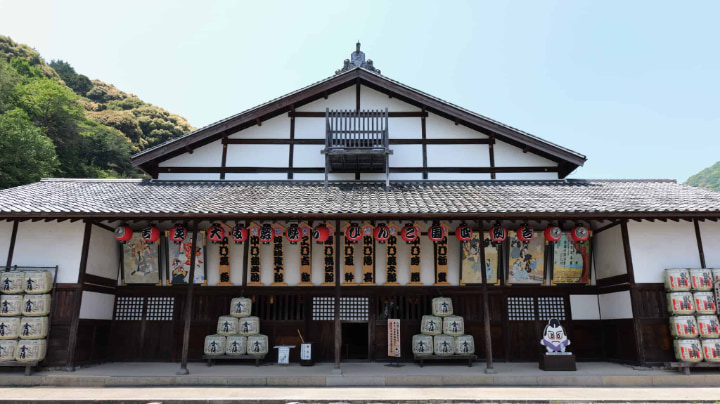
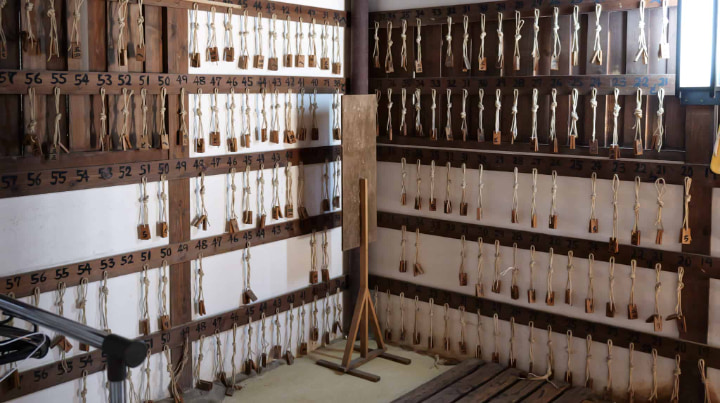
These are known as 下足札 (gesoku-fuda). They used to be given out as numbered tickets so that one’s shoes could be found after taking them off and handing them to the staff.


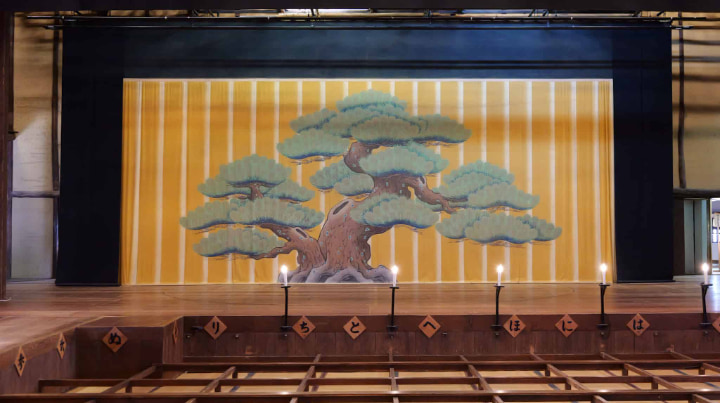
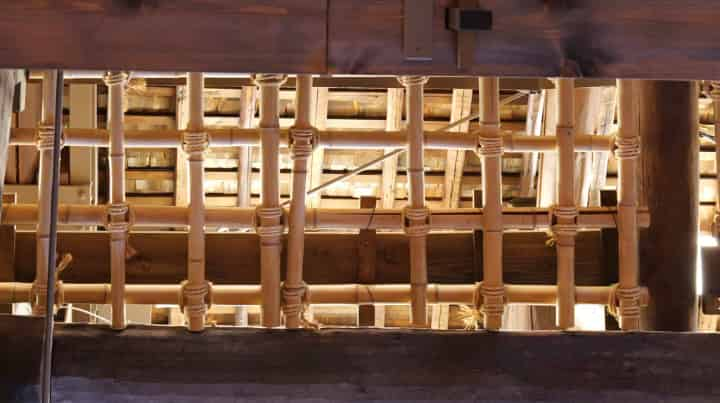
This is the budō-dana and kake-suji in the ceiling.

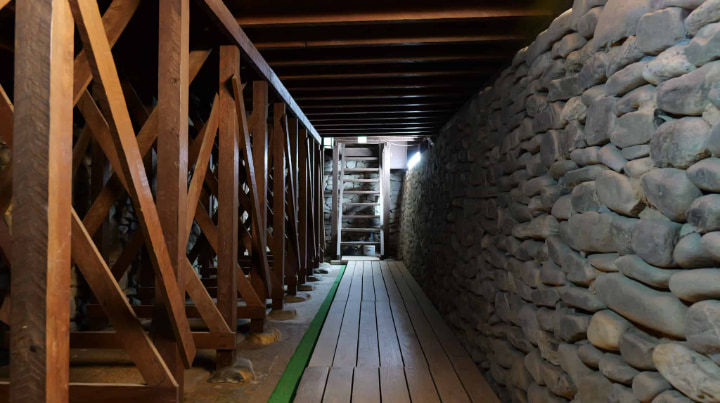
This is the naraku, located beneath the main stage.